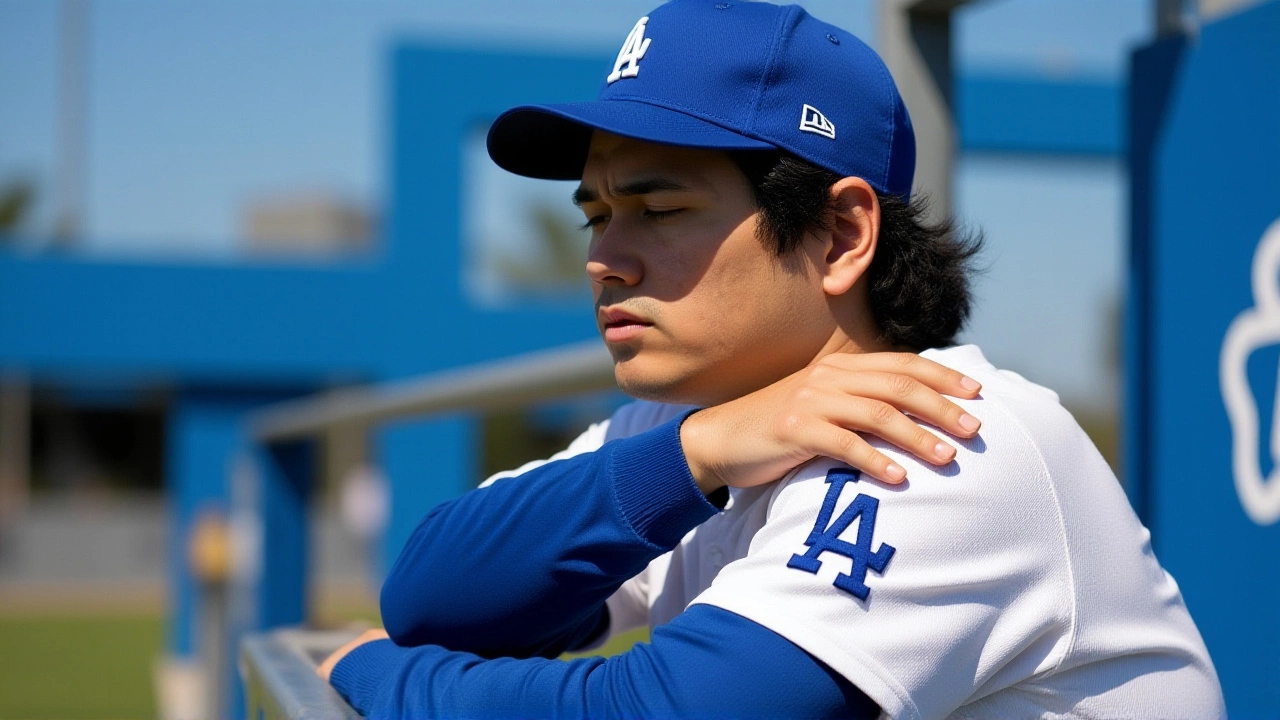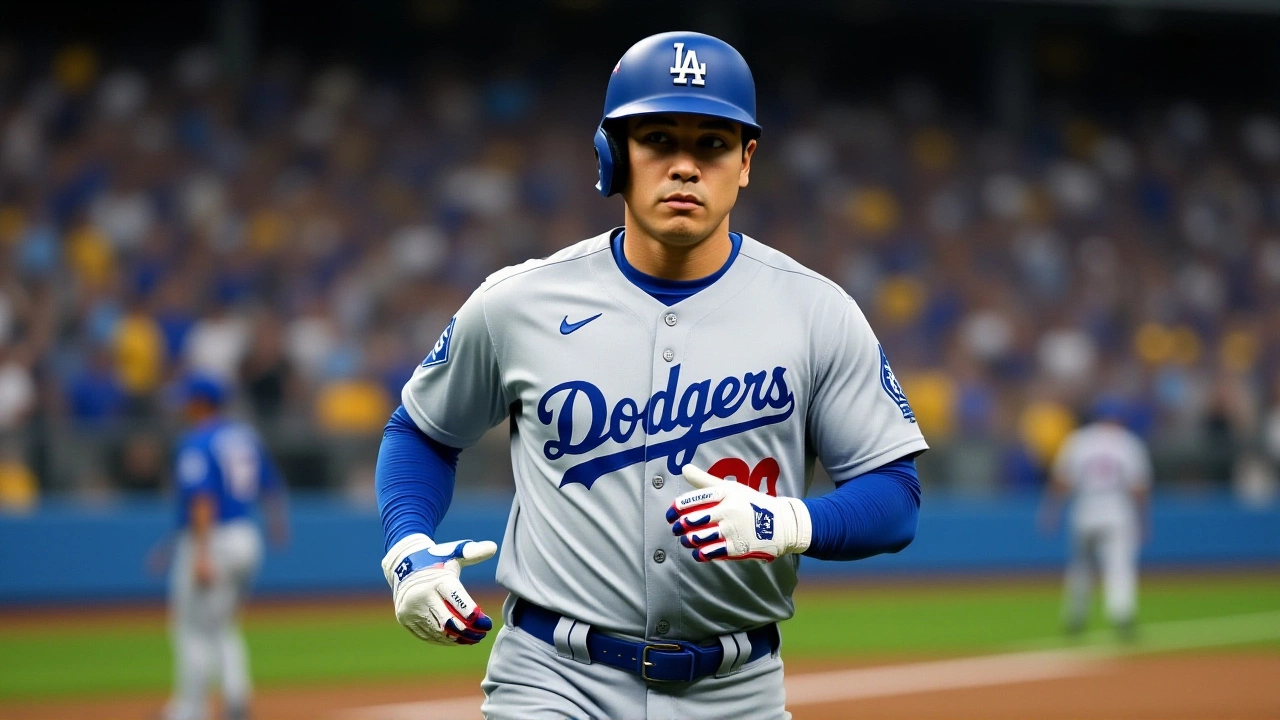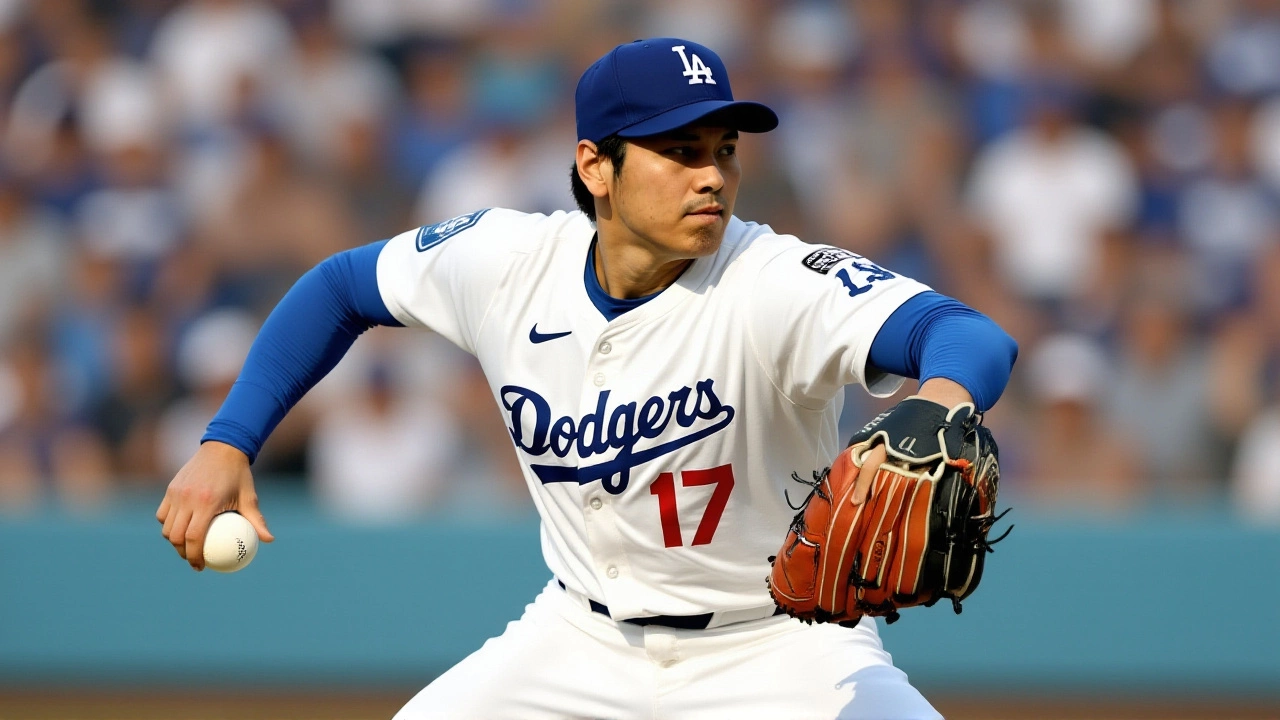When Shohei Ohtani took the mound for the Los Angeles Dodgers at Dodger Stadium on , the baseball world held its breath. Across the diamond, the Milwaukee Brewers were already bracing for a night that would become a textbook‑case of how a single player can rewrite history. In the National League Championship SeriesDodger Stadium, Game 4 turned into an exhibition of power, precision and pure drama.
Background to the 2025 NLCS
The Brewers entered the postseason after a roller‑coaster season that began with a 0‑4 skid but surged to a league‑best 97 wins. Their August run – dubbed “Uecker Magic” by fans – featured a 14‑game winning streak that vaulted them to a third straight NL Central crown. Meanwhile, the Dodgers, fresh off a 105‑win regular season, relied on a deep rotation anchored by veteran Clayton Kershaw and a new‑age two‑way talent in Ohtani. Both clubs had already tasted postseason drama: the Brewers snapped a six‑series losing streak by toppling the Chicago Cubs in the NLDS, while the Dodgers dispatched the Philadelphia Phillies in a gritty NLDS that saw Roki Sasaki earn his first postseason save.
Ohtani’s Historic Game
From the first pitch, Ohtani was in a zone that felt almost cinematic. He opened the bottom of the first inning with a leadoff homer off Brewers starter Jose Quintana. The ball left the bat at a measured 116.5 mph – a tape‑measure blast that sent the Los Angeles crowd into a frenzy. Not content with a single highlight, Ohtani went on to belted two more homers – one in the third and another in the sixth – each a clean, straight‑away shot that seemed to echo through the stadium’s concrete arches.
But the awe‑inspiring power display was only half the story. On the mound, Ohtani’s fastball regularly topped 100 mph, and he rattled the Brewers’ lineup with a relentless 10‑strikeout line over six scoreless innings. He struck out Jackson Chourio, Christian Yelich and William Contreras in order in the top of the first, then walked Brice Turang before delivering a clean inning. By the time he exited, the scoreboard read 5‑1, the Dodgers holding a three‑run cushion that the Brewers could not erase.
“historic performance” is the phrase that instantly floated to commentators’ lips. In a post‑game analysis on Bleacher Report, former Hall of Famer Pedro Martinez declared Ohtani’s night “an all‑time MLB postseason performance.” Curtis Granderson, Jimmy Rollins and Adam Lefkoe echoed the sentiment, noting that no player had ever combined three homers with double‑digit strikeouts in a single postseason game.
Reactions from Brewers and Dodgers
Pat Murphy, the Brewers’ first‑year manager, admitted the loss felt “like a gut punch.” He told reporters, “You have to have been part of it to understand how it really zapped a lot out of us emotionally… The pitching performances by the Dodgers basically put the hammer down.”
Veteran outfielder Christian Yelich tried to find a silver lining. “We aren’t that far. Not as far as it seems. I still believe one day that’ll be us out there… Great pitchers with awesome performances make it tough for us to score,” he said, underscoring the Brewers’ belief that they could rebound next season.
On the Dodgers’ side, the clubhouse buzz was a mix of excitement and strategic calculation. Roki Sasaki, the 23‑year‑old Japanese right‑hander who closed the final three outs, confirmed his confidence: “I’ve never had a save chance before this postseason, and now I’m 3‑for‑3 in the playoffs. It feels like a dream.” The Dodgers’ front office is already weighing Ohtani’s rest schedule. While some analysts argue for regular rest before the World Series, others, like former Dodgers pitching coach Dave Heklund, suggest a relief cameo could keep the batter’s edge alive.

Implications for the World Series
With the NLCS sweep, the Dodgers advance to face the American League champion – the 2025 Texas Rangers – in a World Series that promises a showdown of power versus pitching depth. Ohtani’s dual‑role success adds a layer of intrigue: if he starts Game 1 on the mound, the Dodgers could also roll his bat into the lineup, forcing the Rangers to adjust both defensively and on the mound.
Some experts, like baseball historian Dr. Melissa Greene of Stanford, point out that Ohtani’s ability to dominate both sides of the ball could alter roster construction across the league. “Teams may now prioritize two‑way players in the draft and free agency, seeing a new strategic asset,” she noted.
Historical Comparisons
Ohtani’s night joins an elite club of single‑game feats. The only comparable performance was the 1976 World Series Game 6 where Carl Yastrzemski hit three homers and struck out 10 batters in a single game, but Yastrzemski never pitched. The only other pitcher to hit a leadoff home run in the postseason was Babe Ruth in 1927, yet he never logged a double‑digit strikeout total in the same game.
In short, Ohtani rewrote the rulebook. His 3‑HR, 10‑K, six‑scoreless–inning line will sit in the annals beside legends like Sandy Koufax and Babe Ruth, but with a two‑way twist that may never be replicated.

Key Facts
- Date: October 17, 2025
- Location: Dodger Stadium, Los Angeles, CA
- Final Score: Dodgers 5, Brewers 1
- Ohtani’s line: 3 HR, 10 K, 6 IP, 0 R
- Historic first: pitcher to hit a leadoff home run in a postseason game
Frequently Asked Questions
How does Ohtani’s performance affect the Dodgers’ World Series strategy?
The Dodgers now have the flexibility to start Ohtani on short rest or use him in relief, keeping the lineup potent on both sides. Manager Gabe Kapler may opt to preserve his arm for a potential Game 7, but the psychological edge of a player who can dominate both pitching and hitting cannot be ignored.
What made Ohtani’s leadoff homer historically significant?
He became the first pitcher ever to start a postseason game with a home run. The previous record‑holder for a pitcher‑hitter feat, Babe Ruth, never logged double‑digit strikeouts in the same game, making Ohtani’s combination of power and pitching unmatched.
What were the Brewers’ biggest shortcomings in Game 4?
Milwaukee’s bullpen sputtered, allowing three runs in the sixth after Ohtani’s second homer. Their offense, which had thrived on timely hitting all season, went silent against Ohtani’s fastball, striking out 10 batters without reaching base after the leadoff homer.
Who are the other notable two‑way players in MLB history?
Before Ohtani, the most famous two‑way star was Babe Ruth, who transitioned from pitcher to full‑time slugger. More recent examples include Brendan McKay, who pitched and hit for the Boston Red Sox, though none matched Ohtani’s sustained excellence at both roles.
What does this series tell us about the future of two‑way players?
Teams are likely to scout more aggressively for athletes who can contribute both on the mound and at the plate. Ohtani’s success may inspire a new draft category and influence contract negotiations for emerging two‑way talent.
